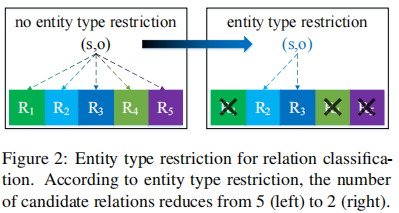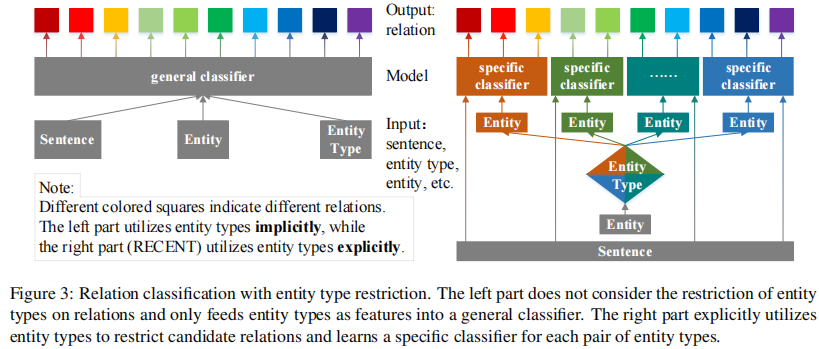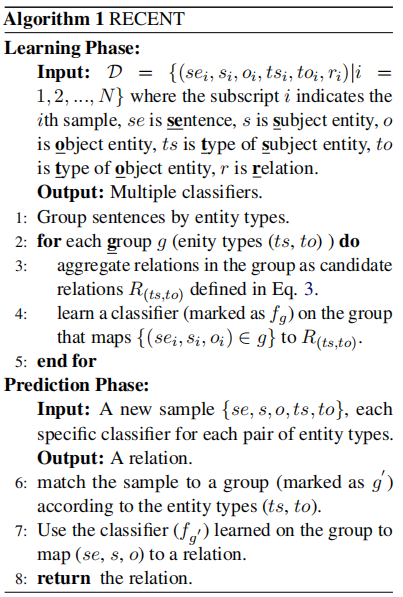Relation Classification with Entity Type Restriction

这是一篇ACL Findings的论文,idea很简单,但却非常奏效。
关系分类旨在预测句子中两个实体间的关系,这篇论文通过实体类型来限制关系的搜索范围。例如两个实体类型都是person,那么他们的关系就可以排除出生地,这样就能减少候选关系的数量:

模型结构

算法流程

- 首先根据句子中实体的类型将句子归好组
- 对于每一组,收集所有关系组成一个集合 $R_{(t s, t o)}$
- 针对该关系集合学习一个分类器 $f_g$
实验结果
由于该方法是模型无关的,所以作者在两个代表性模型上做了实验:

RECENT 分别比 GCN 和 SpanBERT 高了6.9和4.4,提升还是非常明显的。
Cite
1 | @inproceedings{lyu-chen-2021-relation, |